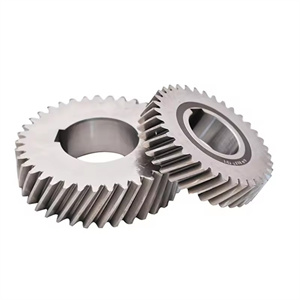
Using CNC machine tools to produce gears is an efficient and accurate manufacturing method. The following are the general steps for producing gears using CNC machine tools:
Design gears: First, you need to use CAD (Computer Aided Design) software to design gears. This includes determining key parameters such as the number of teeth, modulus, pressure angle, and tooth width of the gear.
Programming: Then, you need to convert the CAD design into code that CNC machine tools can understand. This is usually accomplished through CAM (Computer Aided Manufacturing) software. CAM software can convert CAD designs into G code or M code, which are instructions used by CNC machine tools to guide the machining process.
Choose cutting tools and fixtures: Select appropriate cutting tools and fixtures based on the material and design of the gear. Cutting tools are used to remove excess metal, while fixtures are used to fix gears on CNC machines to ensure stability during the machining process.
Set up CNC machine tool: Install the cutting tools and fixtures on the CNC machine tool, and adjust the parameters of the machine tool according to the gear design, such as cutting speed, feed rate, cutting depth, etc.
Start machining: Start the CNC machine tool and start the machining process. CNC machine tools will automatically perform cutting operations based on programmed instructions until gear machining is completed.
Inspection and testing: After the machining is completed, it is necessary to inspect and test the gears to ensure that their dimensions, accuracy, and performance meet the design requirements. This can be achieved by using various measuring tools and equipment, such as calipers, micrometers, gear measuring instruments, etc.
The advantages of machining gears include:
High precision: Machining can ensure precise control of parameters such as tooth profile, tooth pitch, and tooth depth of gears, improving the stability and accuracy of transmission.
Wide selection of materials: Machining is suitable for gear production of various materials, including stainless steel, copper, titanium alloys, etc. Suitable materials can be selected according to actual needs.
High tooth surface smoothness: The tooth surface smoothness of machined gears is high, which helps to improve transmission efficiency and service life.

